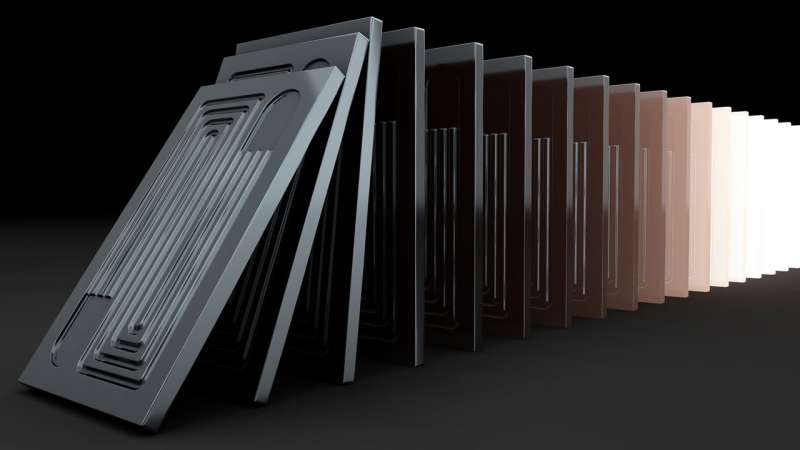October 18, 2018 report
A new cermet that could provide a better heat exchange for solar power plants

A team of researchers affiliated with several institutions in the U.S. has come up with a new type of cermet that could prove especially useful as a heat exchanger in solar power plants. In their paper published in the journal Nature, the group describes how the new material was made and its advantageous properties.
The term "cermet" describes a class of materials made by combining [cer]amics and [met]als. They were first developed by engineers working to solve jet engine issues for the U.S. Air Force. They are notable for their resistance to heat and oxidation, their strength, and their ability to hold up under extreme temperature changes. Over the past few decades, they have been used in many more applications. One of the limitations of current cermets, however, is that they can only be used to create small parts or applied as a surface coating. In this new effort, the researchers report they have developed a cermet that can be used in much larger applications, such as in heat exchangers for power plants.
Making the new cermet was a complicated process involving creating a precursor, and then processing, heating and machining it. The resulting form is heated again, immersed in a mix of zirconium and copper, and once again heated. The researchers report that the finished product was 58 percent zirconium, 36 percent tungsten and the rest copper and tungsten carbide residuals. They also report that the new cermet conducted heat 2.5 to three times better than iron or nickel alloys at temperatures up to 800° C and that it maintained its strength at that temperature.
The researchers suggest their new cermet could prove ideal as a heat exchanger in solar power plants, making them much more efficient. But before that can happen, the new cermet must overcome one major deficiency—its sensitivity to oxidation at high temperatures. The researchers suggest different solutions for this problem could be used for different applications—coating it with copper, for example, and adding carbon monoxide to supercritical CO2 used in power facilities that use it as working fluid in heat exchange systems. They note that it would also be cheaper to produce heat exchangers based on the new cermet than those now based on conventional materials.
More information: M. Caccia et al. Ceramic–metal composites for heat exchangers in concentrated solar power plants, Nature (2018). DOI: 10.1038/s41586-018-0593-1
Journal information: Nature
© 2018 Phys.org




















